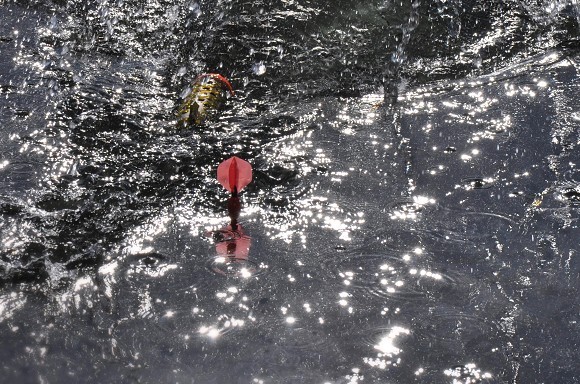
Hitting your spot with no marking aids
Not interested in using marker sticks or walking out your rods? Here's Ed Betteridge with a breakdown of how to do it the old fashioned way but still ensure your hookbait is landing right on the money
I don’t have the bank space to walk out my rods and I don’t like marker sticks, so I’m going to clip-up and mark my line by just casting at my marker float, but are there any guidelines to how far past the float I need to cast depending on the depth of water I’m fishing in?
“There are too many variables on this to give an exact answer and it all depends on the following factors: distance, depth of water, lead size, how hard the clip is hit, if you follow the rod tip down as the lead descends, line type (mono or braid) and a crosswind.
“For example, if you are fishing at 60yds with mono in 5ft of water, with a 2.5oz lead, no wind, hitting the clip lightly and following the lead down with the rod tip, then I wouldn’t cast much past the float, if at all, because the lead will descend more or less vertically over that depth. However, if I’m casting 20yds into 15ft of water and keeping the rod static as the lead sinks then it will swing back a fair distance (short line + deep water = big swing back), so I’d aim to go 6 to 8ft past the float to counteract the swing back.
“If using mono and a heavy lead in the same situation I would go slightly less, but if using a light lead and/or in a crosswind then I would be inclined to clip-up further because a bigger bow will be created.
“Another factor to consider is that at 120yds range, a 5oz lead on mono will leave the rig up to a rod length further out than with a braided line on the same clip; this is due to mono stretch and the fact it does stretch means it will take the bow out of the line. Whereas the lack of stretch in braid means that it causes bounce back and leaves a bigger bow from the arc of the cast and/or crosswind.”
Are there any tips you can give me that will give me a clue if I’ve actually landed right next to my marker float?
“If you want to be exact then you could try putting a marker float set-up on your fishing rod and see where it pops up in relation to the other float before tying your rig on. If you just want a rough guide you could try PVA-ing a big bright pop-up onto the hook and see where it pops up, but I have found these are difficult to spot with any sort of ripple on the water.”
The finishing position of the rod will have a big bearing on how and where the lead lands
Is there anything else I need to take note of – the angle of the cast and the finishing position of the rod (i.e. the angle I’m holding it at when the lead hits the lakebed)? And what if there’s a crosswind blowing?
“The two questions above can go hand-in-hand, what I mean by this is if I find the spot in relatively windless conditions then I will sink the lead with a static rod at 20-degrees below vertical, but if the wind kicks up later I can use the same clip, but follow the lead down a little to counteract the bow put in by the crosswind. But if the conditions are the same, then ensure the rod stays in the same position; you’d be surprised how many anglers change the final position of the rod depending on how hard the clip is hit. The harder the clip is hit, the more inclined the angler is to drop the tip to cushion it, equating to the lead touching down further out.
“In deep water where I have more time to get things exact I often hit the clip and then drop the rod to the side so the tip ring is just above the surface and pointing towards a set point, this will ensue the lead lands in the same position and negates a crosswind.”
And what about the spod rod – do I clip that up next to the marker float or do I need to add a few yards to it?
“If you put all your thought into where the rig is landing and concentrate on getting it near the float then you will want to land the spod on the float.”



